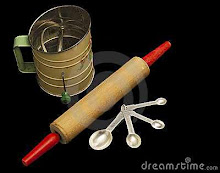~~~~~~~~~~~~~~~~~~~~~~~~~~~~~~~~~~~~~~~~~~~~~~~~~~~~~~~~~
Zucchini is a great plant for beginners to start with since it’s pretty easy and grows quickly…though fair warning: it will make you feel like quite the farmer when you see the abundant harvest each plant produces
Tips For Gardening With Zucchini

The Plant's Bright Yellow Flowers Can Be Eaten & Used In Cooking
Where to plant: Choose a sunny location with some shelter (8 hours sunlight per day). Make sure the soil is well draining, this plant doesn’t like its roots sitting in water.
How to plant: Easy to grow from both seeds and seedlings (to extend the growing season a bit, try starting the seeds indoors about two weeks before moving outside, make sure to harden off before planting).
To get started, dig the soil approximately 6″ deep so the area is nice and loose, mix in a good amount of compost. Sow seeds about an inch deep, approximately 3 feet between seeds (plants can grow and spread about a meter wide).
Zucchini needs a lot of space, but there’s a trick to getting primo produce: Start off by planting 3 seeds together in a mound of soil (planting them just a few inches apart since you’ll be thinning them later). After they germinate and begin to sprout, thin out the plants when they’re 3″ to 4″ tall, keeping the strongest, healthiest looking plant from the bunch. Water immediately after planting seeds then every other day until seeds germinate. Top soil with mulch to keep foliage off dirt and to help maintain the soil moisture.
How many to grow: Each plant will produce lots of zucchini so two should be more than enough for an average size family, one would likely do it but two is nice in case production is slow for some reason or a plant just doesn’t seem to thrive. It’s the gardener’s way of having an “heir & a spare”.
Watering conditions: Water deeply once a week or when the top 1″ of soil is dry, avoid splashing leaves and stems and avoid evening waterings…wet foliage can attract disease. Responds well to an occasional drink of compost tea. If the ends of the fruit turn brown, this is a sign of not enough water.
When to harvest: Once your plant begins to flower, watch and it won’t be too long before it starts bearing fruit. Harvest when the zucchini is about 4 to 6 inches long and the skin is soft, making sure to check under leaves for any hiding. Small is best though you can grow the zucchini to an enormous size, they just won’t be as tasty. Pick them quick because they grow to monster-size lickety split! Quick picking also means the plant will produce fruit more rapidly.
Tips:
- Have more zucchini than you know what to do with and friends and neighbors are hiding? Try freezing it for later use.
- Did you know: The plant produces both male and female flowers…the females are the ones that produce the fruit (males have straight, thin stems while females are large with short stems and have the baby fruit swelling at the base).
- Troubleshooting tips: If you never seem to have any luck with your plants producing any zucchini, you might have a pollinating problem. Make sure to keep some male flowers growing since these are the bee attractors or you can try hand pollinating the plants yourself (Backyard Farming the Natural Way has a tutorial here for hand pollination, click on the pictures to view a larger size). You could also be over-fertilizing if no fruit develops.
- Zucchini responds well to container gardening, just make sure to use a large, deep pot and don’t forget to water. My Urban Garden has some tips here: Container Zucchini-ing.
- Just make it stop: Are you at the point that you can’t stand seeing another zucchini growing on the plant? Pick the flowers, they’re edible (considered a delicacy in some parts of the world) and no fruit can be produced since there are no flowers. Some recipe ideas: Stuffed Zucchini Blossoms, Classic Fried, Cheese Stuffed and Blossom Fans and Emeril’s Sauteed Squash Blossoms Stuffed with Crab and Goat Ricotta Cheese.
- Did you know: Select a new spot each year to grow zucchini for best results, this will ensure the soil nutrients are optimal and not depleted from the previous year.
- http://tipnut.com/growing-zucchini/









No comments:
Post a Comment